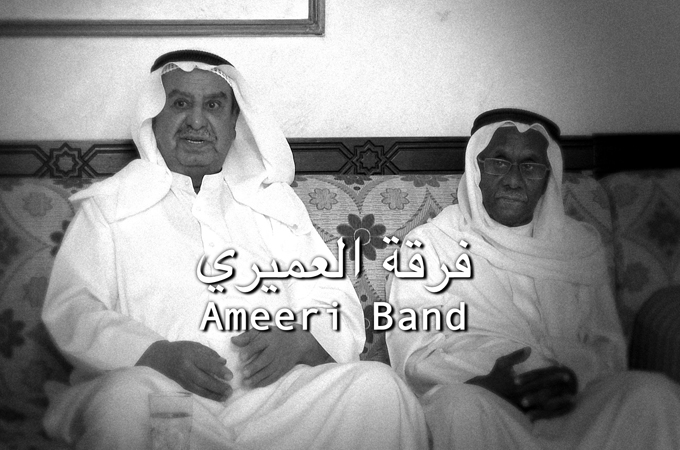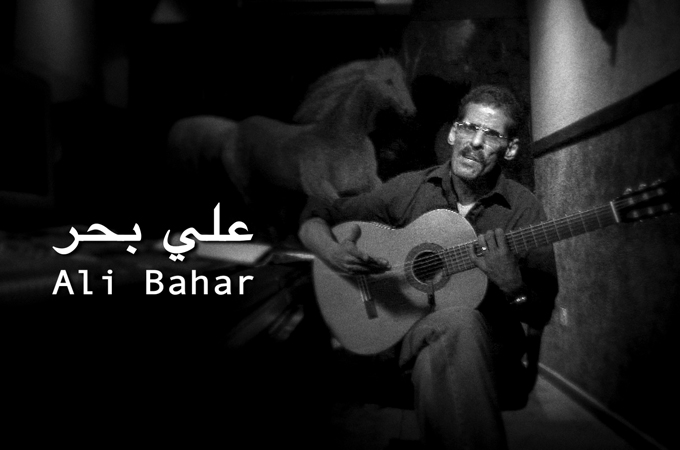Music inspired by the motion of the sea – from fishermen’s melodies to Bedouin desert songs.
Next Music Station is an odyssey through the rhythms of the Arab world.
A year in production, with nine countries visited and more than 80 musicians interviewed, this series by musician and documentary filmmaker Fermin Muguruza paints a ‘soundscape’ of the Arab music scene.
Keep reading
list of 4 itemslist 1 of 4list 2 of 4list 3 of 4list 4 of 4end of listFrom Morocco to the Gulf, Next Music Station takes us on a journey, exploring the music of different Arab countries, en route addressing issues of tradition and modernity, the struggles of the present and the yearning for a brighter future.
In this episode, we travel across two Gulf nations – Kuwait and Bahrain.
Colourful kites wave in the sky, fluttering in time with the legendary musical rhythms of these lands. The kites, together with the oud chords, guide us on this musical voyage.
We hear fishermen’s sea melodies and Bedouin’s desert songs mixed with modern rhythms from the cities.
 | | Ameeri band |
This band has updated the Kuwaiti sawt genre with folklore blues music – first made popular in the seventies with the arrival of new sounds and languages into the country. The recovery of traditional music from the sea (bahri) and of songs sung by sailors at work (a’mal) and at the end of their working day as a way of entertainment (somar) is the basis of this band’s compositions. |
 | | Fawzi al Langhawi |
As a descendant of a family of musicians, his passion for the traditional oud started when he was a child. He experimented with this instrument during his youth until he managed to reproduce typical sounds from other genres such as blues, country or gypsy music which led him to create unique melodies. He now teaches at the Art Music Institute. |
 | | The Culture Project |
Bahraini music, which was originally performed by fishermen in its traditional style, is the focus of this quartet made up of Kuwaiti musicians that play live music. The eastern music, the piano, the popular rhythms and percussions and the song are elements that this cultural band puts into play, creating a new style where Western and Eastern traditional instruments are used. Their music tries to combine both cultures.
|
 | | Bedouin Poets |
This Bedouin trio popularise Kuwaiti traditional sounds using instruments such as the rubabah, the oud, the tanbarah and the habban. This group specialises in hujaini, which is a type of melody that contemporises ancient love songs sang by camel riders during their long journeys through the desert. They also preform the geseed, a type of poetry which advises young people and adults about life.
|
 | | Maram |
This young Kuwaiti artist started her career as a singer in 1997. It was during the 1990s when renovative styles emerged in Kuwait. Her fame and popularity spread quickly across radio and TV stations from all over the Arabic Gulf. She is the author of six music records and has composed the lyrics of her pop songs, sung in Kuwaiti dialect.
|
 | | Ameer Jaffar |
This oud performer, is also a composer and music professor. His music style is academic. He has travelled the world studying and learning different music genres and languages. His music results in a combination of all these influences and combines with Kuwaiti music. With this fuse he has managed to reach an international audience as well as to participate in different documentaries, television shows and scene plays. |
 | | Salman Zaiman |
Born into a musical environment, lead him to become part of the band Ajras at a very early age. As a composer and singer, this Bahraini artist leans towards al-fier, a genre where different instruments such as the percussion and drums have an important role and with which he has managed to update the folklore of Bahrain and fuse it with modern music. He organises music festivals events for children at schools. |
 | | Ali Bahar |
A famous Bahraini musician, popular for singing in local dialect. He sings and plays guitar with several rock bands and his music influences are a reminder of the music revolution from the 1960s and 1970s as well as reggae and jazz genres. The classic guitar and the nehma, a type of traditional song, take part in his compositions too. He has published more than 20 records. |
|
Across the Gulf airs from Tuesday, August 23, at the following times GMT: Tuesday: 2000; Wednesday: 1200; Thursday: 0100; Friday: 0600; Saturday: 2000; Sunday: 1200; Monday: 0100; Tuesday: 0600.
Click here for more on the series. |









